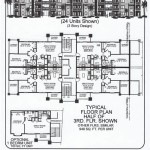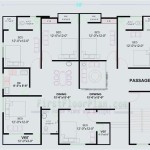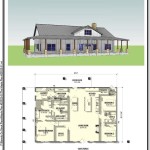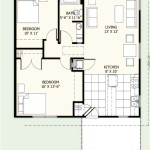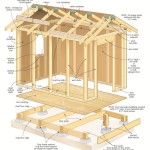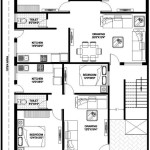House Plans With Attached Greenhouse: Integrating Sustainable Living
The integration of a greenhouse into a house plan signifies a commitment to sustainable living, allowing homeowners to cultivate plants and extend growing seasons within a controlled environment directly accessible from their living space. These house plans are increasingly popular among individuals seeking to incorporate gardening, food production, and natural beauty into their daily lives. Developing a house plan with an attached greenhouse requires careful consideration of various factors, including climate, orientation, materials, and intended use, to ensure optimal functionality and energy efficiency.
Several motivations drive the adoption of house plans with attached greenhouses. Functionally, an attached greenhouse provides convenient access to fresh produce, herbs, and flowers year-round, reducing reliance on external sources and promoting a healthier lifestyle. Aesthetically, the greenhouse can serve as a focal point, bringing the tranquility of nature indoors and enhancing the overall ambiance of the home. From a sustainability perspective, integrating a greenhouse reduces the carbon footprint associated with transporting produce and promotes self-sufficiency. Furthermore, the greenhouse can contribute to energy efficiency by acting as a buffer zone, moderating temperature fluctuations and reducing heating or cooling demands in the adjacent living spaces. This integration also aligns with broader trends towards biophilic design, which emphasizes the connection between humans and nature in the built environment.
Understanding the Benefits of an Attached Greenhouse
The advantages of incorporating an attached greenhouse into a home design extend beyond simply growing plants. The controlled environment offered by a greenhouse allows for the cultivation of a wide variety of species, including those that may not thrive in the local climate. This extends growing seasons, enabling the production of fresh produce even during colder months. The convenience of having a greenhouse accessible directly from the home makes gardening a more frequent and integrated part of daily life. This can lead to improved dietary habits and a reduced dependence on commercially grown produce, often transported over long distances. Furthermore, the greenhouse provides a therapeutic space, offering a calming and engaging activity that can reduce stress and improve mental well-being. The visual appeal of lush greenery and flowering plants also enhances the aesthetic quality of the interior space, creating a more inviting and relaxing atmosphere.
From an environmental standpoint, an attached greenhouse can contribute to a more sustainable lifestyle. By growing food at home, homeowners reduce their consumption of commercially produced goods, which often involve significant energy consumption in transportation, packaging, and refrigeration. The use of organic gardening practices within the greenhouse further minimizes environmental impact by avoiding synthetic pesticides and fertilizers. Additionally, composting and rainwater harvesting systems can be integrated to create a closed-loop system, further reducing waste and conserving resources. The greenhouse can also serve as a passive solar heating system, capturing solar energy during the day and releasing it into the adjacent living spaces, reducing reliance on conventional heating methods. This can lead to significant energy savings and a reduced carbon footprint over the long term.
Finally, the integration of an attached greenhouse can increase the property value of a home. The unique feature adds aesthetic appeal and functionality, making the property more attractive to potential buyers. The sustainability aspects of the greenhouse also align with the growing demand for environmentally friendly housing options. Furthermore, the ability to grow fresh produce year-round can be a significant selling point, particularly for individuals and families prioritizing healthy eating and self-sufficiency. The greenhouse can also be marketed as a versatile space, suitable for a variety of uses beyond gardening, such as a sunroom, meditation space, or home office.
Key Considerations in Designing a House Plan with an Attached Greenhouse
Designing a house plan with an attached greenhouse requires careful consideration of several factors to ensure its functionality, energy efficiency, and aesthetic integration. The orientation of the greenhouse is crucial for maximizing sunlight exposure. In the Northern Hemisphere, a south-facing orientation is generally preferred, as it provides the most direct sunlight throughout the year. However, shading strategies may be necessary during the summer months to prevent overheating. The climate also plays a significant role in determining the appropriate materials and design. In colder climates, insulated glazing and thermal mass materials are essential for retaining heat, while in warmer climates, ventilation and shading are crucial for preventing excessive heat buildup. The intended use of the greenhouse will also influence its design. If the primary goal is to grow vegetables, the greenhouse should be designed to maximize sunlight exposure and provide adequate space for plant growth. If the greenhouse is intended for use as a sunroom or relaxation space, comfort and aesthetics will be more important considerations.
The materials used in the construction of the greenhouse significantly impact its performance and longevity. Glass is a traditional choice for greenhouse glazing, offering high light transmission and durability. However, glass can be heavy and expensive, and it can also be prone to breakage. Polycarbonate is a lightweight and durable alternative to glass, offering good light transmission and insulation properties. Polyethylene film is another option, offering a more affordable but less durable solution. The framing of the greenhouse can be constructed from wood, metal, or plastic. Wood is a renewable resource that provides good insulation, but it requires regular maintenance to prevent rot and decay. Metal is strong and durable, but it can be prone to corrosion. Plastic is lightweight and resistant to rot and corrosion, but it may not be as strong or durable as wood or metal. The choice of materials will depend on the budget, climate, and aesthetic preferences of the homeowner.
Ventilation is critical for maintaining a healthy environment within the greenhouse. Adequate ventilation helps to regulate temperature, humidity, and air circulation, preventing the buildup of excessive heat and humidity, which can lead to plant diseases and pests. Ventilation can be achieved through natural means, such as vents and louvers, or through mechanical means, such as fans. Natural ventilation is generally preferred, as it is more energy-efficient and less costly. However, mechanical ventilation may be necessary in climates with limited airflow or during periods of extreme heat or humidity. The placement of vents and louvers should be carefully considered to ensure optimal air circulation. Vents should be located near the top of the greenhouse to allow hot air to escape, while louvers should be located near the bottom to allow cool air to enter. Fans can be used to supplement natural ventilation and improve air circulation throughout the greenhouse.
Integrating the Greenhouse Seamlessly into the House Design
The aesthetic integration of the greenhouse into the overall house design is crucial for creating a cohesive and visually appealing space. The style and materials of the greenhouse should complement the existing architecture of the house. For example, a greenhouse with a wood frame and glass glazing would be well-suited to a traditional-style home, while a greenhouse with a metal frame and polycarbonate glazing would be more appropriate for a modern-style home. The greenhouse should also be carefully positioned to maximize its visual impact. A greenhouse placed prominently on the front of the house can serve as a focal point, while a greenhouse tucked away in the backyard can provide a more private and secluded space. The size and shape of the greenhouse should also be proportional to the size and shape of the house. A greenhouse that is too large or too small can look out of place and detract from the overall aesthetic appeal of the property.
The connection between the greenhouse and the interior of the house should be seamless and inviting. The doorway leading from the house into the greenhouse should be wide and accessible, allowing for easy movement of plants and equipment. The flooring in the greenhouse should be durable and water-resistant, such as concrete, tile, or gravel. The interior of the greenhouse can be decorated with plants, furniture, and accessories to create a comfortable and relaxing space. The use of natural materials, such as wood, stone, and bamboo, can help to create a sense of harmony with nature. The greenhouse can also be used as an extension of the living space, providing a year-round connection to the outdoors.
Energy efficiency is a critical consideration when designing a house plan with an attached greenhouse. The greenhouse should be designed to minimize heat loss during the winter and prevent overheating during the summer. Insulated glazing and thermal mass materials can help to retain heat during the winter, while ventilation and shading can help to prevent overheating during the summer. The greenhouse should also be oriented to maximize sunlight exposure during the winter and minimize sunlight exposure during the summer. The use of energy-efficient lighting and appliances can further reduce energy consumption. Solar panels can be installed on the roof of the greenhouse to generate electricity, providing a renewable source of energy for lighting, heating, and ventilation. A well-designed and energy-efficient greenhouse can significantly reduce the energy costs associated with heating and cooling the house.

The Noble Home Vintage House Plans Small Sims

Pin By Annie Gassmann On Home Ideas Country Style House Plans Farmhouse

House Plan 1 Bedrooms Bathrooms 90101 Drummond Plans

Small Modern And Green House Plans By Mark Stewart

Home Plan 001 2024 Great House Design Plans Custom

House Plan 87609 Victorian Style With 5250 Sq Ft 4 Bed Bath

House Plan 1 Bedrooms Bathrooms 90101 Drummond Plans

Building Attached Greenhouses For Houses

Home Plans With Attached Greenhouse Google Search Interesting Floor Plan For A Round House Dome

Attached Greenhouse Design With Sustainable Indoor Planter Beds The Natural Home

